Gacha games - mobile/online titles built around “capsule toy” (gashapon) mechanics have exploded in popularity worldwide over the last decade. Originating in Japan in the early 2010s, these free-to-play RPGs let players spend in-game (and real) currency for chances at rare characters or items. Big hitters like Genshin Impact (miHoYo/HoYoverse), Honkai: Star Rail (HoYoverse), Tower of Fantasy (Hotta Studio/Perfect World), and Wuthering Waves (Kuro Games) have turned gacha into a global phenomenon. This article dives into their stories, developers, revenues, gameplay, community, controversies, and industry impact.
Gacha Games 101: How the Capsule - Toy Model Works
The name gacha comes from Japanese gachapon (capsule toy machines) en.wikipedia.org. In games, “banners” of characters or items are offered for random draws: you spend a premium currency (often bought with real money) for a chance at rare loot. Most gachas are free-to-play RPGs with heavy emphasis on collecting and strategy. Critically, many incorporate a “pity” system guaranteeing a top-tier character after a set number of pulls - to keep players engaged. For example, miHoYo’s games typically give a guaranteed 5★ character by 90 pulls on a featured banner.
The model can be highly lucrative: players (often nicknamed “whales” if they spend big) drive massive spending. Gacha mechanics are controversial because they rely on randomness and can be addictive, earning comparisons to gambling. Game designers must balance offering free currency via gameplay and tempting purchases. In practice, new limited banners, events and milestones spur continual spending.
Did you know? Puzzle & Dragons (2012) - one of the first mobile gacha RPGs - was the first mobile game to gross $1 billion in revenue, eventually surpassing $6 billion by late 2017!
Developers & Origins: Who’s Behind the Hits
miHoYo / HoYoverse (China): Founded in Shanghai in 2012 by three college students, miHoYo became famous for the Honkai series and then Genshin Impact. After Genshin’s global success, miHoYo launched the HoYoverse brand in 2022 to handle worldwide publishing. The studio also developed Honkai: Star Rail and will soon release Zenless Zone Zero (2024).
Kuro Games (China): Established 2014 (Zhuhai) and now based in Guangzhou, Kuro Games made its name with the sci-fi ARPG Punishing: Gray Raven. In 2024 it launched Wuthering Waves, an open-world gacha RPG blending anime action and fast combos. (Tencent bought a major stake in Kuro in 2023, reflecting its success.)
Hotta Studio / Perfect World (China): Hotta Studio, a Suzhou-based team under publisher Perfect World, created Tower of Fantasy. (Perfect World is a major Chinese game company; it even self-publishes Tower of Fantasy globally.) Tower of Fantasy launched in China late 2021 and worldwide August 2022. Perfect World’s 2023 financial report indicates Tower of Fantasy has now earned roughly ¥4.4 billion (~$608 million) in its first two years.
Com2uS (South Korea): A veteran mobile games company, Com2uS launched Summoners War: Sky Arena in 2014. This turn-based monster-collecting RPG became one of the genre’s longest-lasting hits, topping $1.3 billion in lifetime revenue by 2018.
Aniplex / Delightworks (Japan): Fate/Grand Order (FGO), released 2015 in Japan, is the crown jewel of anime gachas. Aniplex (Sony) reports FGO hit $7 billion in player spending by mid-2023 gameworldobserver.com, over 80% of it from Japan gameworldobserver.com.
These studios exemplify how Eastern developers have redefined global gaming with gacha titles. They regularly share behind-the-scenes stories (like miHoYo’s dev timeline for Genshin or Kuro’s developer interviews on Wuthering Waves store.epicgames.com) that show how years in development and large teams are now common.
Mega-Hit Profiles
Genshin Impact (miHoYo / HoYoverse)
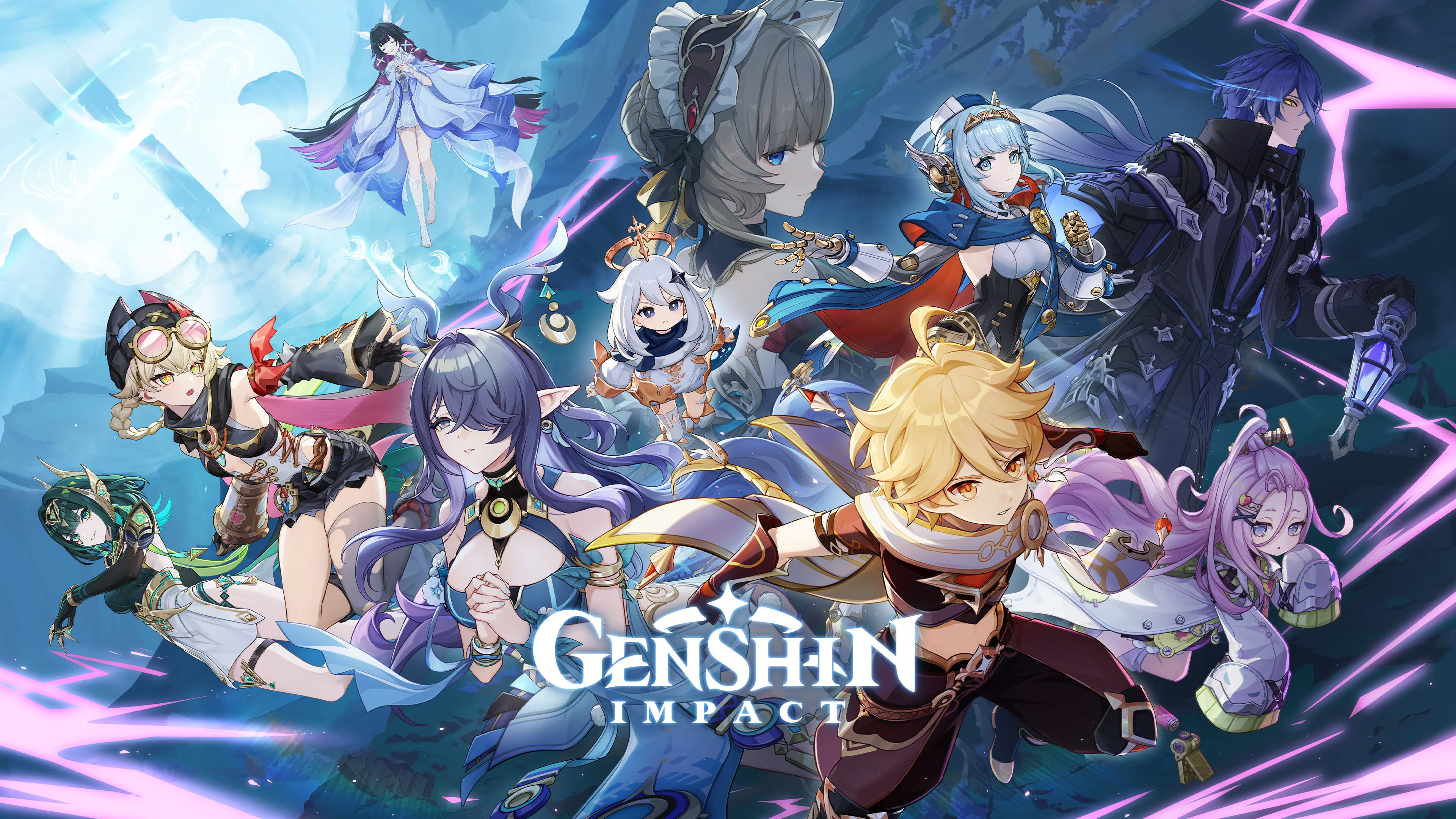
Origins & Studio: Genshin Impact is miHoYo’s 2020 blockbuster. Development began around 2017, and it launched globally on September 28, 2020. MiHoYo - now HoYoverse - had previously shipped the Honkai games and even an Otome title (Tears of Themis), but Genshin was their first AAA open-world RPG.
Gameplay: Genshin is a free-to-play open-world action RPG with anime styling. Players control a party of four characters, switching mid-battle to combine elemental powers (fire, water, wind, etc) and solve puzzles. Exploration is front-and-center: climbing mountains, gliding, and uncovering secrets in a fantasy world. The game runs on all platforms (mobile, PC, consoles), a rarity for a gacha RPG.
Fighting monsters in the open world of Wuthering Waves (by Kuro Games). Genshin Impact’s vast world and refined combat set a new bar for mobile RPGs, inspiring many imitators. Its subtitle motto even hints at cross-platform ambitions: HoYoverse promises Genshin content on mobile, PC, and consoles (PS4/5, Xbox).
Gacha System: Genshin’s “Wish” banners use a dual system: the standard Character and Weapon banners, plus occasional event banners. Each 5★ pull is on a 50/50 chance (either a guaranteed featured character or another 5★). A pity system guarantees a 5★ if you haven’t pulled one in 90 attempts. Four-star pity at 10 attempts. In addition to banner currency (Fates bought with real money), players earn “Primogems” through gameplay and events. This system encourages saving Primogems for favorite character releases.
Revenue & Players: Genshin was a phenomenon. Sensor Tower reports it grossed roughly $3 billion in player spending in its first 18 months. By early 2023 it had surpassed $4 billion worldwide, and industry analysts project even more (one report estimates Genshin might hit ~$6-7B global by 2025). Notably, Genshin had a record-breaking first-year: it remains the highest-ever first-year launch revenue for any video game. China, Japan, and the US are its biggest markets.
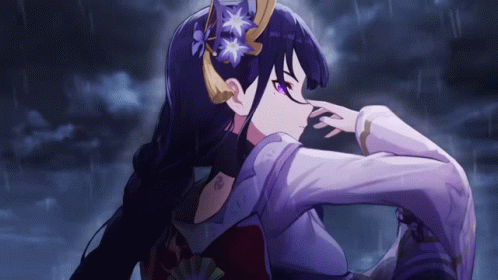
Did you know? Genshin Impact’s first version (1.0) made over $400 million in three months, almost rivaling Honkai: Star Rail in its launch period.
Community & Updates: HoYoverse has maintained a 6-week release cadence: each major update introduces a new region, characters, events, and story quests. This “games-as-service” model keeps millions of players engaged. Events (like story festivals, collaboration promos) and new banners are always viral topics on social media. MiHoYo also livestreams reveals (featuring excited fans, music, behind-the-scenes) to generate buzz. The game spawned a huge ecosystem: fan art, cosplay, YouTube guides and even a Genshin anime series announced for 2024.
Criticism & Controversies: On the flip side, Genshin’s gacha has been criticized for fueling excessive spending. Some players complain about needing many rolls (and $$$) to get certain characters. MiHoYo has defended its pity rates, but regulatory bodies in some countries have scrutinized gacha odds. Genshin has also faced other controversies: e.g., accusations of political censorship (removing some jokes related to real-world protest) and debates over character design/colorism. In general, any high-profile gacha title attracts scrutiny over “predatory monetization”, and Genshin is no exception.
Honkai: Star Rail (HoYoverse)

Origins & Studio: Honkai: Star Rail is HoYoverse’s 2023 entry in their “Honkai” universe. It launched worldwide on April 26, 2023. Rather than an action open-world, Star Rail is a turn-based RPG set in a sci-fi/space-fantasy setting (the “Astral Express” train across galaxies). Developed by the same team behind Genshin, it’s meant as a more traditional JRPG experience, but with their polished production values.
Gameplay: Players journey between planets, controlling a squad of up to four characters in grid-based, turn-based battles. Each character has unique skills and Ultimate attacks. It’s heavy on story (with visual-novel elements) and strategy. Unlike other Honkai titles, Star Rail’s combat is slower but deeper (players plan turns, combos of character ultimates, and team synergies). It also uses anime-style cutscenes and has collectibles scattered around new worlds.
Gacha System: Star Rail’s gacha is conceptually similar to Genshin’s but optimized for turn-based. It has banner pools for characters (3-5★), weapons/Lightcones, and also offers free tickets. Pity rules guarantee a 5★ character (and often a weapon) within 90 pulls, with a 50/50 chance for the featured vs another. A big difference is that Star Rail includes a crafting element where duplicates grant ability upgrades. Overall, it retains the familiar limited-banner-cycle structure that encourages saving for new heroes.
Revenue & Players: Sensor Tower data show Star Rail had an incredibly strong launch. It earned about $500 million in just its first three months (Apr-Jul 2023) on mobile, nearly matching Genshin’s first-quarter total ($515M for Genshin’s launch period). A breakdown shows China contributed ~41%, Japan 23.9%, the US 12%, and Korea 7%. By comparison, it quickly climbed miHoYo’s publisher rankings (contributing ~65% of miHoYo’s total revenue in that quarter). Within the first day, Star Rail made over $6 million, besting Genshin’s record for 24-hour mobile revenue. Demand has stayed solid, giving HoYoverse its #2 global publisher spot and fueling plans to expand Honkai’s universe further.
Community: The Star Rail community shares fan theories about the story (rich with lore), draws character art, and discusses banner rates. The game held in-game events tied to its anniversary and new story chapters, often with freebies and prizes. HoYoverse announced special livestreams and fan contests for Star Rail, much like it does for Genshin. While fan activity is smaller than Genshin’s, it’s dedicated - character leaks and rate speculation are hot topics on Reddit and Discord.
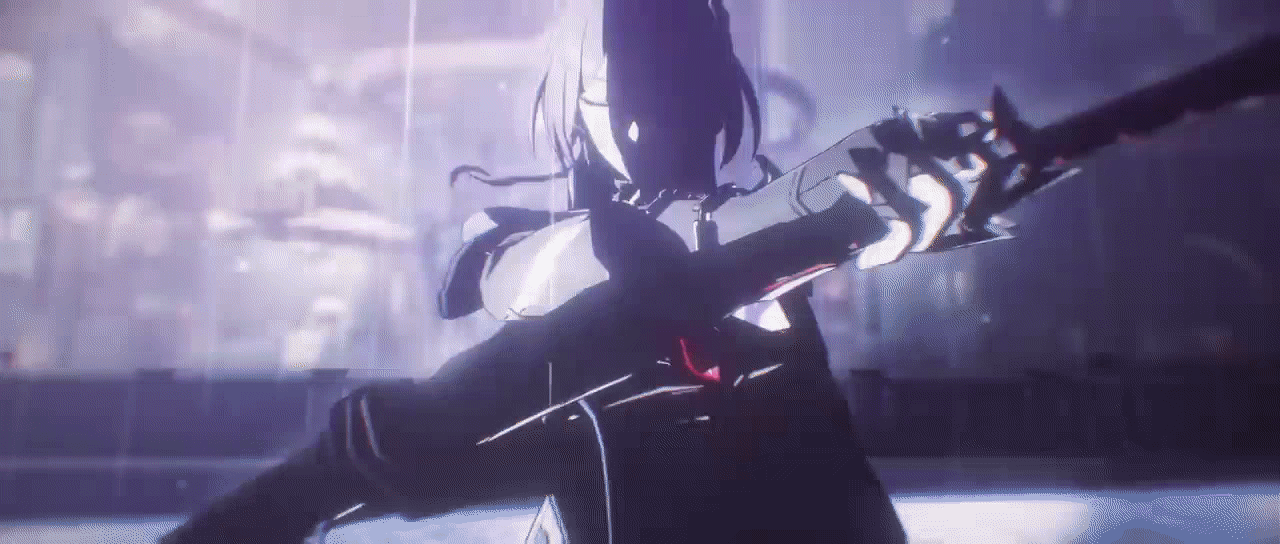
Criticism: Star Rail is generally well-received, but it’s not without critique. Some veteran players mention that many characters have similar designs (a mix of sci-fi and fantasy tropes), and the slow pacing may not appeal to action-gamers. Gacha-wise, complaints are typical - needing many rolls for favorites. No major scandals (like censorship) have hit Star Rail yet, but as with any high-grossing gacha, the business model itself (whales, daily stamina limits) faces ethical questioning.
Tower of Fantasy (Hotta Studio / Perfect World)
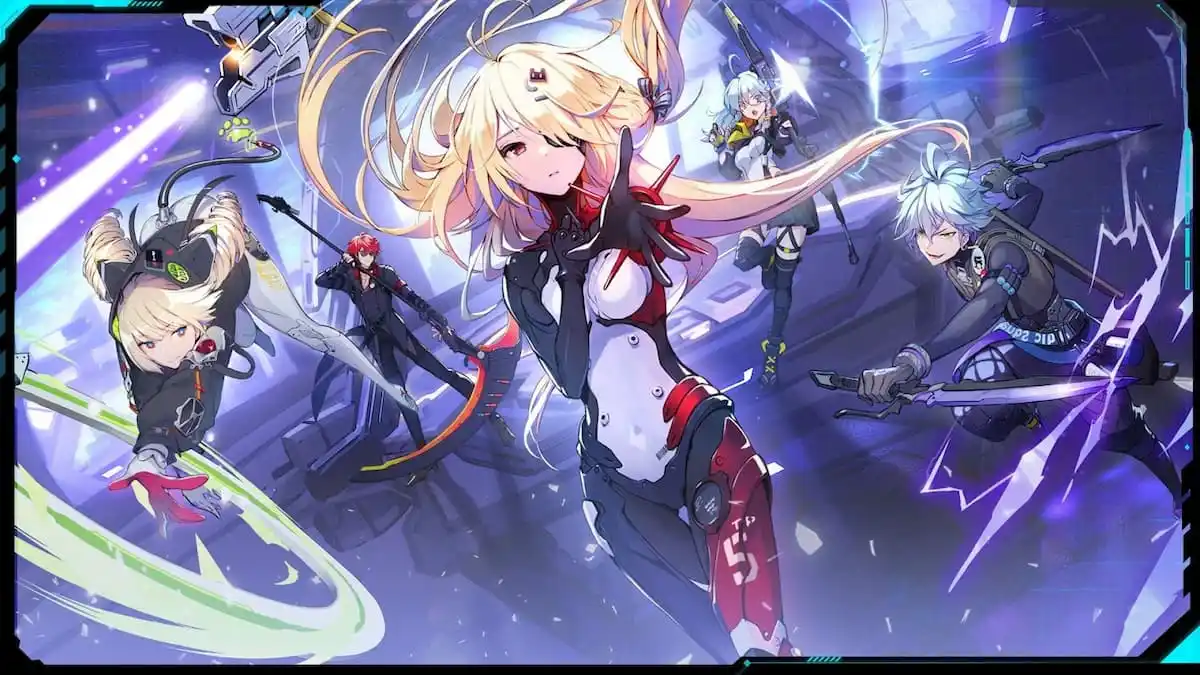
Origins & Studio: Tower of Fantasy (ToF) came from Hotta Studio, launched by Perfect World. It first soft-launched in China on Dec 16, 2021, then saw a global release on August 11, 2022. Perfect World Games, an established Chinese publisher, invested heavily in ToF as a multi-platform sci-fi open-world MMORPG (available on PC, mobile, and later consoles).
Gameplay: ToF is a shared-world open-world RPG set on the post-apocalyptic planet Aida. Players create custom avatars, explore with hover-boards and vehicles, solve world puzzles, and engage in combat with guns and blades. It emphasizes co-op play and features a day/night cycle, dynamic weather, and living city hubs. Its visuals recall anime+cyberpunk, with a strong customization system (players can mix and match costumes and hairstyles, and even gender-change their character at will).
Gacha System: ToF’s gacha is somewhat different. It uses two currencies (“Vouchers” and “Gold”), plus a special “Radar” system where players can target limited characters. Each banner is time-limited, and 5-star character pity is at 90 pulls (10-pull gives at least one 4★). Players can also spend an in-game currency obtained by gameplay (Gold is earned in missions) or premium currency (Vouchers bought with real money). The mechanics are broadly similar to Genshin’s, though ToF adds features like weapon swapping in combat and a “Clover” auto-farming to help progression.
Revenue & Players: Tower of Fantasy was a hit especially at launch. Perfect World’s investor report reveals ToF brought in about ¥4.4 billion CNY (~$608 million) from mobile alone by end of 2023. It reportedly had over 30 million pre-registrations before global launch. Western gamers quickly jumped in: ToF was among the top 10 mobile games by downloads in Q3 2022. However, spending patterns vary; Japan and North America combined make up a significant share. Perfect World’s consolidated 2023 revenue was $1.1 billion, with ToF as the newest star.
Community & Updates: Tower of Fantasy has a robust community across platforms (PC and mobile). It ran familiar “6-week patch” updates at first, adding story chapters, weapons, and characters (like Dr. S, Edda, etc.). However, player feedback drove changes: in 2023 the devs released a major 2.0 overhaul to address criticism (improving progression speed and story). Social media buzz around ToF includes cosplay and fanart, but also debates: some praise its character designs and real-world location motifs, while others miss Genshin’s more polished systems. The game has held events like a Phoenix Festival and collaborated with anime (e.g., Attack on Titan skins).
Controversies: ToF drew heavy comparisons to Genshin Impact at launch (“Is it a clone?”), which sparked debates online. Some players complained about slow progress, repetitive endgame content, or high stamina gating. The major 2.0 update was in part a response to community feedback. There were also technical hiccups: at one point a DDoS attack briefly took down servers, and some players noted login glitches on mobile. Monetization ethics have been questioned too: long-time players sometimes lament “pay-to-win” elements (e.g., buying power boosts) and “loot box” microtransactions. Still, Perfect World continues steady updates to retain the playerbase.
Wuthering Waves (Kuro Games)
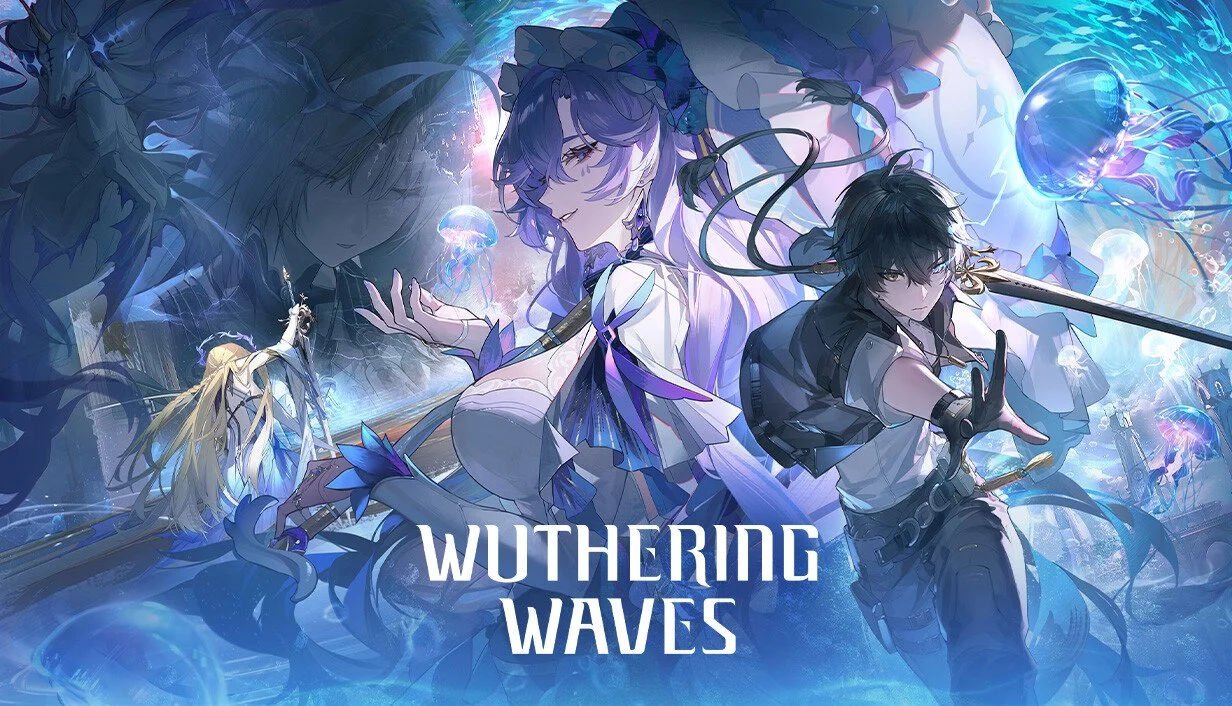
Origins & Studio: Wuthering Waves launched May 23, 2024. Its developer, Kuro Games (founded 2014), is known for Punishing: Gray Raven. WW had a very long development cycle (over 5 years including rewriting much of its story). It was notable as the first Kuro game to hit global (mobile, Steam, Epic Games, PlayStation) simultaneously. The name reflects an art-motif (wind/wave).
Gameplay: Wuthering Waves is an anime-style open-world action RPG with an emphasis on high-mobility combat. Players dash and weave while auto-attacking, building combos to trigger powerful moves. There’s also a focus on timing-heavy “Evocation” skills and team synergies. The world is a series of floating islands with colorful biomes, runes scattered to power up your character, and puzzles to solve with environmental abilities. Its art style and controls led some to compare it to Genshin, but Kuro stresses their combat is more “combo” and less puzzle-based.
Character art from Wuthering Waves by Kuro Games. The visuals are vibrant and anime-inspired. Fans especially enjoyed Wuthering’s unique combos (e.g. Zhezhi’s whip attacks, Changli’s blunt-force fists). Kuro also integrates limited-time “story missions” that gradually expand the lore of the world. Notably, the developers rewrote large parts of the plot post-launch based on beta feedback, demonstrating their commitment to narrative quality.
Gacha System: Wuthering Waves uses standard gacha banners. Characters and weapon banners run concurrently with each version update. There’s a pity system (90 pulls for a 5★), and limited-time banners ensure certain characters are only obtainable during their event. The game’s currency (“WSP”) and gemstone equivalents are earned via quests or bought. Kuro also made a point of giving generous free currency around launch to let early players try the banner system.
Revenue & Players: WW’s early performance was extremely strong. According to AppMagic/PocketGamer, it earned $250 million on mobile by March 6, 2025 (just 288 days after launch). Even more impressively, by Wuthering’s first anniversary (May 2025) AppMagic estimated $317.3 million on mobile (note: this excludes PC/console sales). The Chinese market provided significant sales, but Japan is the biggest spender in percentage terms (roughly 28% of WW’s revenue, ~$72M). Other key markets are China (22%), South Korea (15%), and the US (15%). The launch was accompanied by 30+ million preregistrations worldwide, and initial daily revenues of ~$2-5M were reported on update banners.
On Steam, Wuthering Waves hit a concurrent player peak over 200k and was a top-seller in several countries on release. Kuro’s success even attracted more investment: Chinese giant Tencent now owns a majority stake (51.4%) in Kuro.
Community & Engagement: Wuthering Waves fans are very active. Kuro held live streams for each new version, previewing characters and story (the devs often chat casually with fans). Social media is full of fan art and gameplay clips (some players love showing off lengthy combo chains). For its first anniversary, Kuro even threw an official event in Los Angeles and local meet-ups worldwide (Japan, Korea, China, etc) to celebrate. As [72] reports, fans in costume, music performances, and challenges filled the celebration, highlighting a vibrant community. Weekly Twitch streams by influencers analyzing banners are common.
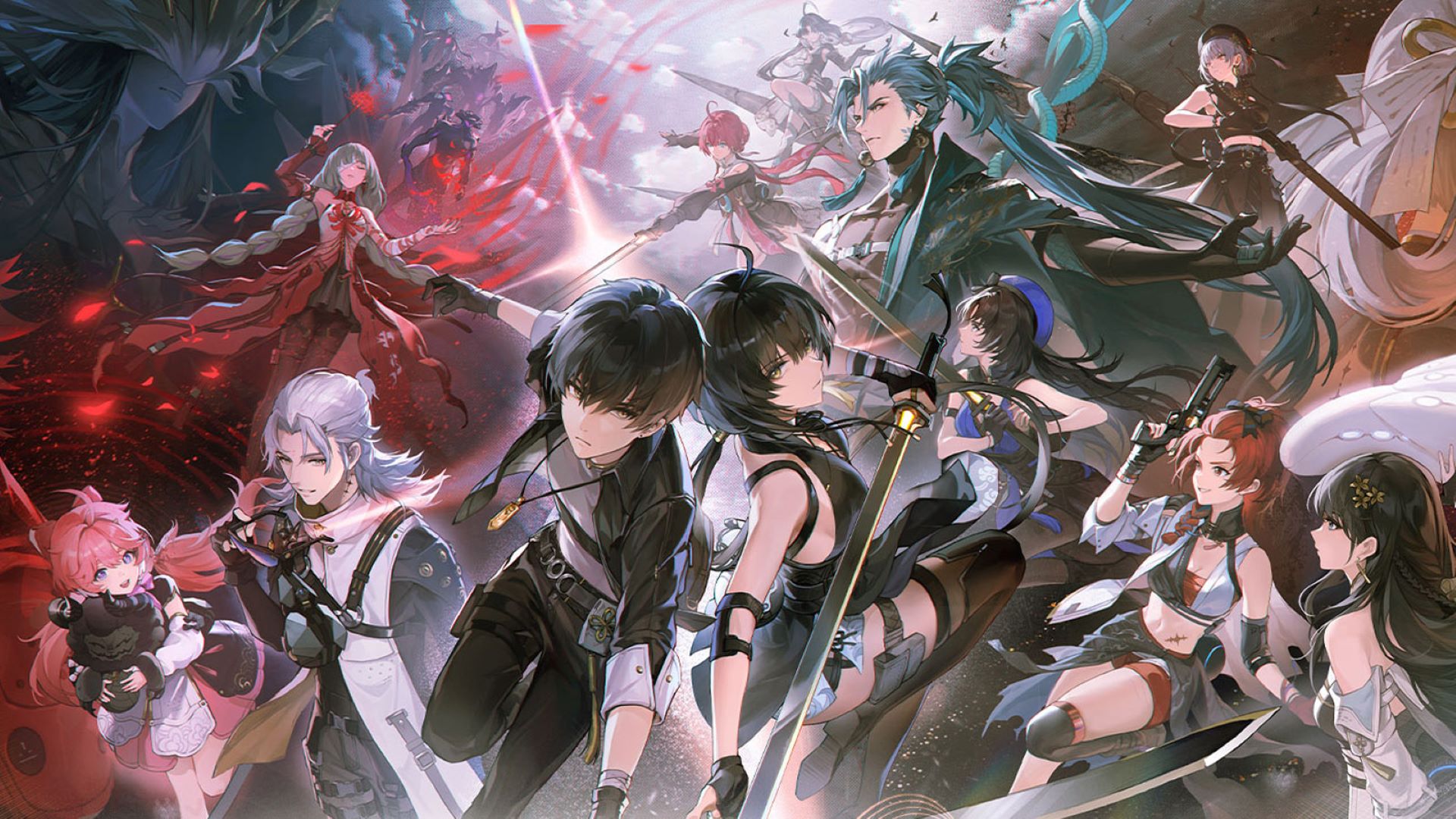
Controversies: Wuthering Waves launched without major scandals, but there have been criticisms. Some Western players accused it of mimicking Genshin’s vibe, though others point out Wuthering’s distinct combat feel. In China, a minor controversy arose early on: an in-game character skin was briefly removed amid unfounded claims it contained “non-standard ideological content” (related to trans rights), but Kuro clarified it was a misunderstanding. As always, the core complaints are familiar: too many ads for microtransactions, “sweat economy” stamina systems, and bugs at launch (some players had login delays due to server load). Kuro responded quickly to many issues with patches. Overall, gacha fatigue has set in: some veteran gamers say it’s hard to tell a new gacha apart from another at first glance.
Tip for Players: In most gacha games (Genshin, Honkai, ToF, WW, etc.), patience pays off. Save your premium currency for banners featuring your favorite characters. Developers often rerun banners later - so don’t panic-summon! Also, take advantage of the generous free pulls that come with updates. Spending a bit every month is common, but keep it fun and affordable.
Gameplay Styles: What Makes Each Game Distinct?
While all these games share gacha mechanics, their gameplay differs:
Open-World ARPGs (Genshin Impact, Tower of Fantasy, Wuthering Waves): These titles emphasize exploration and real-time combat. You wander vast maps, climb towers, and complete puzzles or dungeons. Combat is action-oriented: Genshin’s unique feature is elemental reactions (e.g. combining Ice and Lightning for Superconduct), while ToF adds shooting mechanics and mountable vehicles. Wuthering stands out with acrobatic combo chains and flashy “Evocation” moves that feel almost like a fighting game.
Turn-Based RPGs (Honkai: Star Rail, Summoners War, FGO): Here strategy reigns. In Honkai: Star Rail, battles occur on a grid where timing and team composition (synergies of attacks) are key. Summoners War has classic turn-based monster duels, and FGO is card-driven strategy. These games focus on team-building and story rather than player reflexes. Turn-based games can often introduce more narrative content per update because combat is slower and designers can include lengthy cutscenes.
MMO-Style (Tower of Fantasy): ToF blends solo open world with MMO elements. You see other players in the world, tackle world bosses together, and have PvP minigames. Though it’s not fully “massively multiplayer” in the same sense as WoW, it fosters a social hub city and co-op events.
Visual Novel Elements (FGO, Honkai): These games include in-game comics or voiced story episodes. Genshin and Wuthering are lighter on text, whereas FGO and Star Rail often pause gameplay for extended story dialogues. This appeals to fans of anime storytelling.
Each game builds its own identity. For example, Genshin’s success spurred many Western developers to incorporate gacha elements in RPGs. Tower of Fantasy’s PC-friendly design showed global publishers that a Chinese RPG could break into Western markets (unlike many titles that stay domestic). Honkai Star Rail is carving out a niche by blending space opera with chibi-anime charm. The genre’s strength is variety - players can choose open adventure or methodical RPG depending on taste.
Community & Live Events
A key to gacha success is an engaged fanbase. Developers keep communities buzzing with:
Frequent Updates: Most major gacha games release 6-8 week content patches. Each update has new characters (and their banners), story quests, and limited-time events. Announcements (often via global livestreams) are hyped on YouTube/Twitter. For example, HoYoverse’s 24-hour streams tease upcoming regions, and Wuthering Waves streams show character trailers with excited hosts.
Time-Limited Events: To keep players returning daily, gachas hold seasonal or holiday events. These offer mini-games and free rewards (gems, materials). Genshin has “Windblume Festival”, Star Rail has “Anniversary Celebration” quests, ToF had a “Fever Time” event, etc. These events also add temporary story chapters or cosmetic giveaways, driving social buzz.
Social Media & Fan Creations: Hashtags for new banners, user-made guides, memes, and cosplay contests flourish. For instance, a popular “Did you pull?” Twitter meme arose for every new gacha banner across games. Subreddits (r/Genshin_Impact, r/Honkai etc.) are active hubs. HoYoLab (miHoYo’s forum) and Discord servers allow fans to share tips and glitches.
Live Celebrations: Some games mark anniversaries with real-world events. Kuro Games’ Wuthering Waves anniversary in LA (with cosplay stage shows and a real cake) is a great example. Fate/Grand Order has huge fan conventions in Japan for each year. The communal feel - players celebrating characters together - turns what could be a lonely “wheel spin” into a fandom activity.
Gamer Tip: Follow official streams and sites! In most gachas, the devs announce future banners and banner schedules well in advance. If you plan your pulls around those announcements (e.g. aiming for a powerful character you like), you can save money and resources. Also, participating in in-game events often earns you lots of free pull tickets or currency.
Controversies & Criticisms
Despite their popularity, gacha games face significant criticism:
Monetization Ethics: The core mechanic - random chance for desirable items - is often compared to gambling. Critics say it exploits players’ desire to collect rare characters. Some countries (e.g. Belgium) have already fined companies for violating gambling laws. Even in-region pushes vary: China, for instance, limited crystal-gacha spending to curb addiction in minors. Many players voice concerns over the “pay-to-win” trap: spending large sums for competitive advantage.
“Whales” and Live Ops: These games rely on a small percentage of big spenders (“whales”) to fund development. This can create resentment if in-game power gaps widen. Reddit threads often quip about expensive characters or nerfed content that makes earlier paid achievements moot.
Bugs and Releases: High-profile titles launch with bugs (server crashes, login errors). Genshin famously had a login glitch at launch and several in major patches. Tower of Fantasy’s early English launch had character duplicates. Some argue that new games should have more polished releases given their budgets.
Content Issues: Sometimes story or art choices draw backlash. Genshin’s developers apologized over a promotional mini-game (a KFC skin incident) that many found embarrassing. In 2024, a Wuthering Waves character’s outfit led to transient rumors of “political content”, but this was quickly debunked by the devs. More commonly, fans debate diversity and representation - e.g., calls for more LGBTQ+ characters or criticism of “censoring” content for certain regions.
Monotony and Fatigue: Interestingly, veteran gamers sometimes voice that all gacha games are starting to feel the same. With similar banner interfaces and elemental-arcade combat, enthusiasts joke there’s “one soup, many noodles.” This has led developers to tout unique features (Star Rail’s turn-based battles, WW’s combo action) to stand out.
Did you know? Some academic and industry sources warn that aggressive live-ops can lead to burnout. The coercive monetization critique (e.g. a Gamasutra blog on Puzzle & Dragons) highlights how games craft the illusion of skill while driving spending. Awareness of these tactics helps players stay mindful of their spending and choices.
The Gacha Genre’s Global Influence
Gacha games have reshaped the gaming landscape:
Mobile to Console Leap: Genshin Impact proved that a “mobile game” could live on PC/console and hold its own. Nintendo has taken note: while it hasn’t released a Genshin competitor, it did launch “Monster Hunter Stories 2” free-to-play elements. Even genres like racing and sports are experimenting with gacha loot boxes.
Elevated Production Values: High-end graphics, orchestral soundtracks, and Hollywood-style trailers (Genshin had voiceovers with top dub studios) are now expected. Mid-tier devs want a piece of the pie, so budgets have inflated. (Some argue this is a bubble, but as of 2025 it’s booming.)
Internationalization of Eastern Games: These titles have shown that Chinese and Korean developers can produce content appealing worldwide. For decades, Western and Japanese games dominated globally; now Chinese hits consistently top download charts in the US and beyond. This shift has sparked more investment in Western companies by Chinese publishers (e.g. Tencent’s stakes in Riot, Ubisoft).
Live-Service Mindset: The success of these RPGs has pressured many single-player franchises to adopt live-service models (DLCs, seasons, online events). We see remnants of gacha culture in Destiny’s seasonal loot, or how NBA2K sells player card packs.
Cultural Exchange: Gacha games often collaborate across cultures (e.g. Honkai Star Rail’s collab with global franchises). They popularize anime aesthetics among wider audiences. Characters become pop icons (e.g. Genshin’s Klee, ToF’s Aldo). This creates a new kind of global fandom, blending Eastern art with Western influences.
In short, gacha titles are not a niche - they are massive cultural products. Genshin Impact alone is often credited with bringing many new players into gaming (the official lift-off point was that many who had never played games on PC tried Genshin). ComScore data (for example) has shown surges in RPG playtimes in markets where these games launched. Gacha’s influence is also seen in analytics: Sensor Tower’s charts in 2025 routinely show these games in top grossing lists worldwide, matching or out-earning traditional console blockbusters.
Summary: Why Gamers Love (and Hate) Gacha
Gacha games offer a blend of collectible thrill, RPG mechanics, and continuous novelty. Fans get excited over new waifus/husbandos, cross-game lore, and the social rituals of pulls and reveals. The live-updating nature means there’s always something new to chase. “Roll excitement” is a real factor - the same dopamine that makes slot machines addictive also makes predicting who you’ll get exciting.
However, the model thrives on temptation. The fear of “missing out” on a limited character, or keeping up with whaling friends in PvP events, can pressure players to spend. That’s why game ratings and consumer groups urge moderation.
For the casual fan: these games can be deeply rewarding for free if you enjoy exploration and clever strategy. They deliver hundreds of hours of content before you even need to spend. Tips like tracking what’s on banner rotation, doing daily login rewards, and playing events fully will keep you progressing.
For whales and whales-to-be: know your budget. Devs ensure there’s always one more banner to roll on. Set strict limits before launching that wish…and remember, it’s just a game.
Ultimately, gacha games have carved a lucrative corner of the global market by merging RPG fun with microtransactions. Titles like Genshin Impact and Wuthering Waves have shown that if done right, this model can support massive worlds with ongoing updates while raking in billions for publishers. Their rise has already shaped the industry: expect more cross-platform RPGs with gachas to ride this wave.
Sources: Industry reports and analytics (Sensor Tower, AppMagic, PocketGamer, GameWorldObserver) and official data were used to compile all. All data are for illustrative purposes in this analysis of major gacha games’ histories and impacts.
